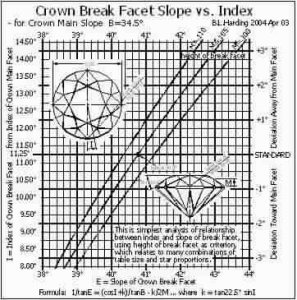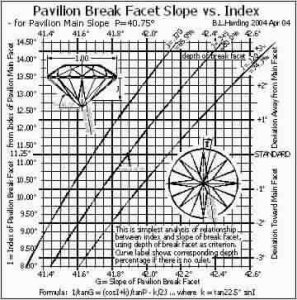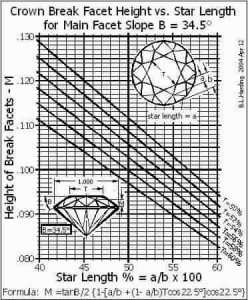. In response to a query from Garry Holloway 2 weeks ago ...
. The attached chart shows the slope (inclination) of crown break facet according to its index (azimuth) from the adjacent main facet if the height of the break facet is to remain unchanged. Here the data are for a crown main slope of 34.5°. The plots are for three heights; others could be added; the .105 value is typical.
. The important thing is the relationship between index and slope changes: for 1° increase in index, the break facet slope increases about 0.7°. Data in the 2nd decimal place have no meaning to a practical faceter - he jst 'fits' the things.

. The attached chart shows the slope (inclination) of crown break facet according to its index (azimuth) from the adjacent main facet if the height of the break facet is to remain unchanged. Here the data are for a crown main slope of 34.5°. The plots are for three heights; others could be added; the .105 value is typical.
. The important thing is the relationship between index and slope changes: for 1° increase in index, the break facet slope increases about 0.7°. Data in the 2nd decimal place have no meaning to a practical faceter - he jst 'fits' the things.









300x240.png)